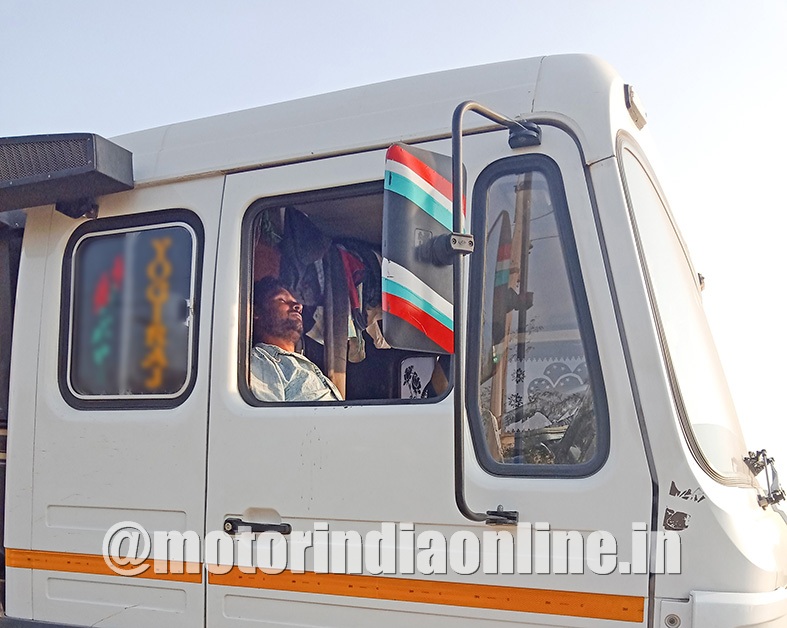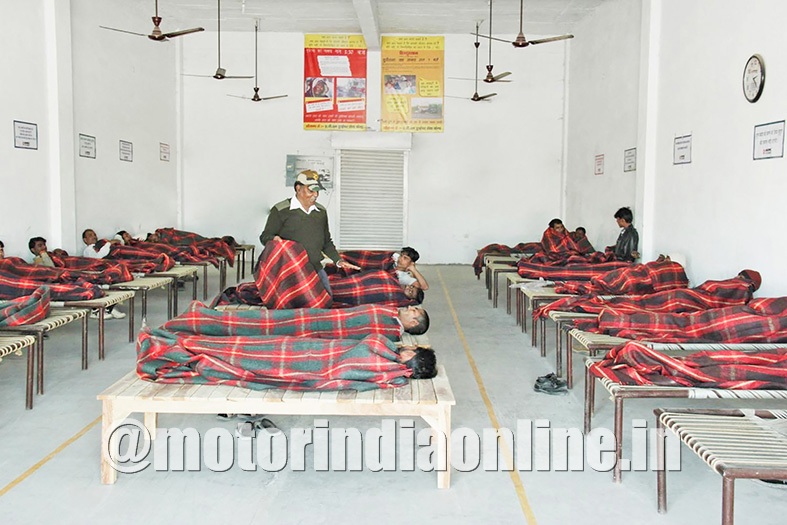As per the data received from the police department of States/UTs, 1,50,785 persons and 1,47,913 persons were killed in road accidents during the calendar years 2016 and 2017 respectively. This is the reply received for a parliamentary question.
In other words, around 400 people on an average are losing their lives every day on Indian roads. I shudder to think of 16 precious lives being sucked out every minute! What a gloomy picture of our road safety.
We often hear of drunken driving, no seat belt, speeding, road condition, bad weather and mechanical failures. But one of the biggest and yet often unrecognized human errors is drowsy driving. A major problem not only in India but across the globe. The risk, danger, and often tragic results of drowsy driving are alarming indeed. Obviously lack of sleep is the main culprit. And add to it the catalyst agents like medications, alcohol and sleep disorders, sleepiness gets aggravated.
Many drivers in the country sacrifice sleep, an often overlooked and dangerous behaviour that results in majority of them being sleep-deprived while behind the wheel every day. There is no official count of lives lost in drowsy driving-related crashes in our country.
Falling asleep at the wheel is suicidal. It is not only dangerous to the driver but to all other road users. It certainly jeopardises the safety.
Here are some signs that should tell a driver to stop and rest:
Drooping eyelids, yawning repeatedly or rubbing eyes, blurry vision and nodding head are the first signs of drowsiness. Drifting from lane, tailgating, feeling restless and irritable are yet some more indication of drowsiness.
Daydreaming, disconnected thoughts, trouble remembering the last few miles driven and missing exits are sure signs of drowsiness. No wonder a drowsy driver suddenly finds himself in front of an approaching vehicle. If the luck is on his side, he may quickly straighten his steering or else add up to the road victims due to drowsy driving.
Why take a chance? Prevention is better than cure. Drivers experiencing any of these warning signs should pull over to rest. Alcohol is a very good friend of drowsiness/sleep.
Commercial truck drivers are especially susceptible to drowsy driving. On Indian Highways, a truck driver hardly gets the required sleep. Unrealistic delivery targets and compulsive night driving add to his woes. Often the rush of making in time for the destination during the last few miles, the driver tends to overlook drowsiness, and thus resulting in fatal accidents.
Let us agree on a simple fact that every one of us needs sleep. A biological compulsion. For a driver behind the wheel it assumes unique importance. The sleep-wake cycle is inevitable. Specially on a long straight highway the monotony accentuates our sleepiness.
Sleepiness decreases our vigilance, response time, memory and decision making which are all essential ingredients of safe driving. In fact, it is more detrimental to safety than drunken driving. Somehow the individual takes pride in denying that he is sleepy!
Recently a driver on a night shift hit the fence at the Mundra port and realized it only after it happened, and is perplexed as to how it happened. He said: “I was not sleeping.” Drivers may not be aware of shorter lapses and microsleeps. It could have had serious consequences in a high-speed drive.
Compared to a breath analyser used to detect drunk driving we have no definitive detection system for drowsiness which is a clear drawback in treating drowsiness as an offense by law.
There is no substitute for sleep. Driver has to ensure that he had enough sleep before setting out on a highway trip. Tea/coffee could work only for a short time but not as a remedy for sleep deficit. Drugs, tobacco and similar habits may keep your eyes open, but will make your brain slow and under-functioning. Drug provides the sleep-deprived driver false confidence in his driving abilities.
The best thing would be to avoid late night driving on the highways. Yes, no denying the truth that night driving has its own charms, but at the same time our highways are largely lawless at night. Continuous headlamp glare from the vehicles can tire eyes. Still, if it is a compulsion for commercial vehicles to ply during nights it is imperative for the drivers to have adequate sleep.
One must avoid marathons on the highways. Two drivers’ concept is an ideal solution specially for long night driving.
Drivers must frequently drink water which will prevent to wear them down due to dehydration. They must take a break at mandatory intervals of every 2 hours of drive during which time they should stretch, get some fresh air, drink a hot beverage and wash their face. Experienced long-haul drivers are well aware of the fact that over-eating causes drowsiness. Fighting the sleep will be a futile effort as it can and will catch him out. We must acknowledge and respect our body clock.
Choosing a safe place like a dhaba or sarai with guarded parking lot would provide uninterrupted rest, free of cargo/diesel theft fear. It is better to find a cot to sleep in a dhaba than to end up on a hospital bed. During these breaks, our truck drivers should keep themselves away from alcohol/drugs.
Be it law enforcing authorities or the honchos of the Industry, must recognise that just like drunk driving and seat belts, drowsy driving is also a serious issue.
The need of the hour is to educate the drivers on the importance of sufficient sleep. Safety of our highways requires an education campaign to bring in awareness and policy initiatives by MORTH. Fortunately, drowsy driving is preventable, and the precious lives can be easily saved.
By Raghuram Sharma

